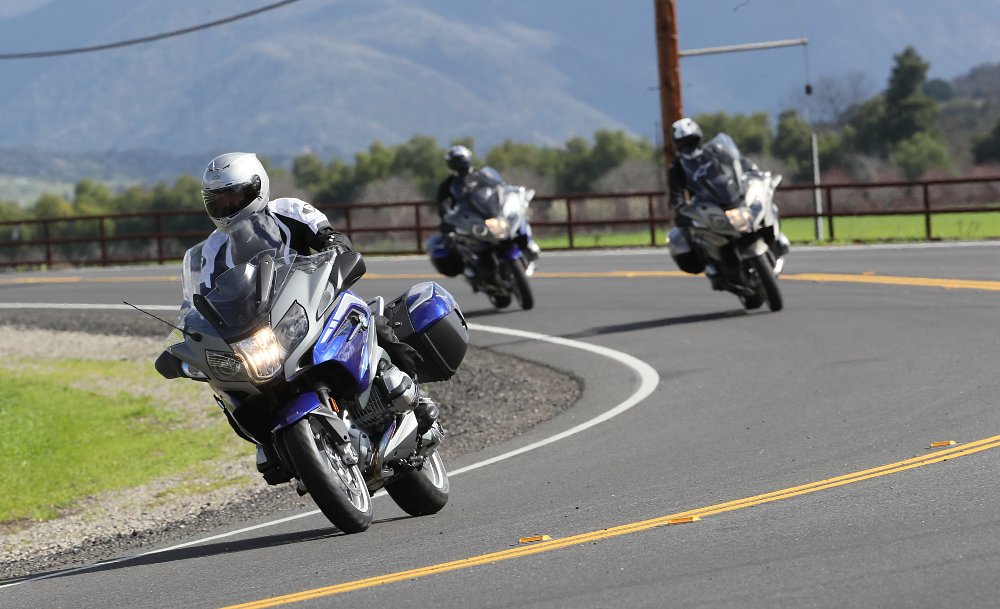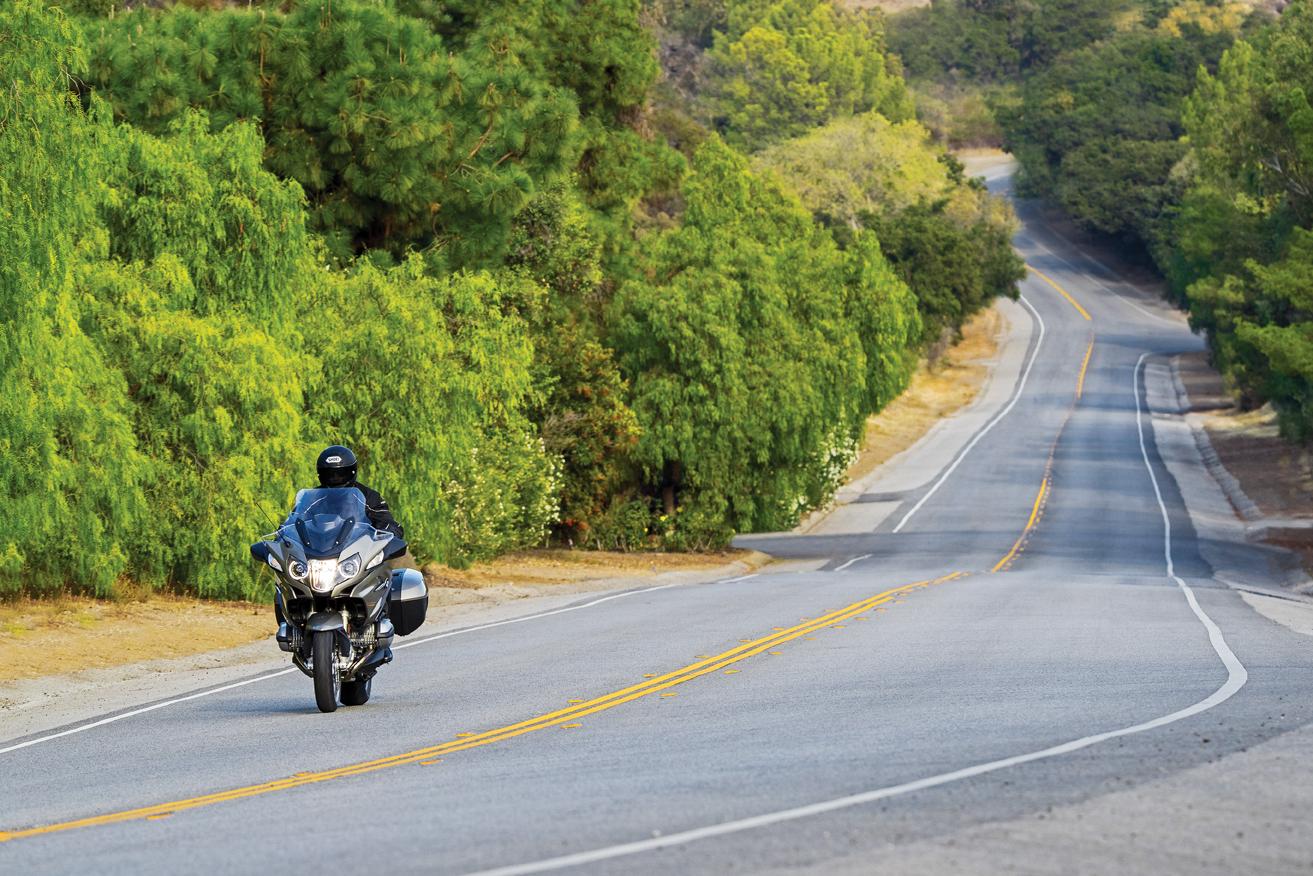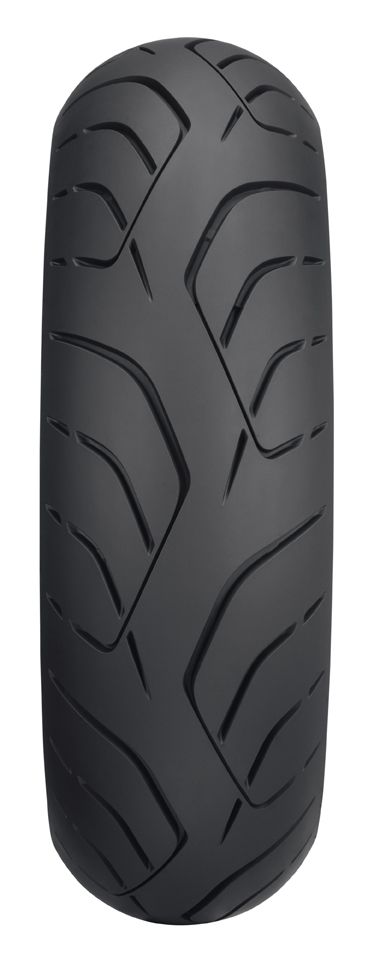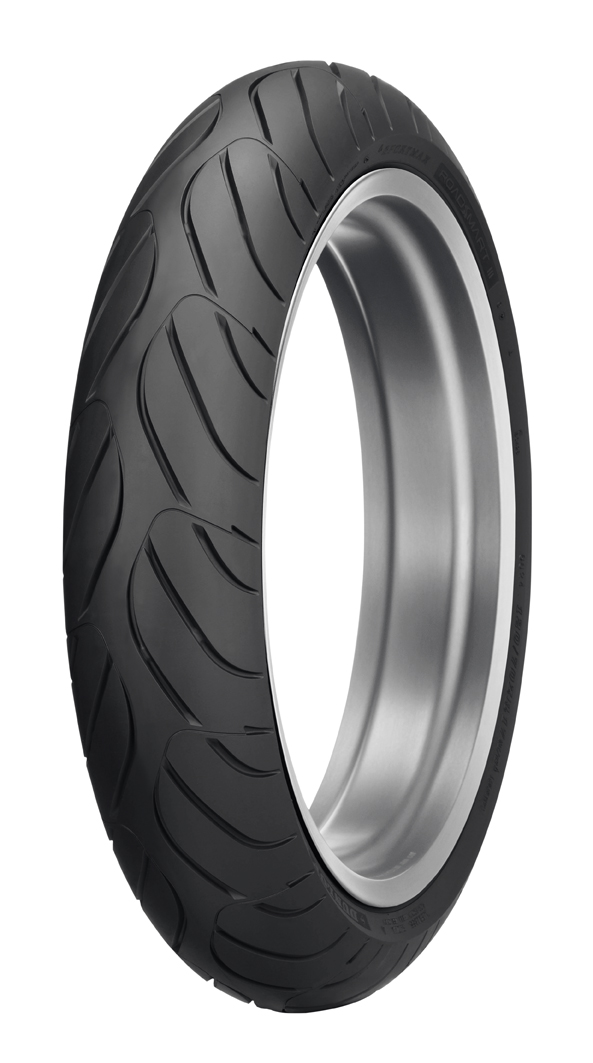
Test riding the new Dunlop Roadsmart III sport-touring tire on a BMW R 1200 RT. Photo by Brian J. Nelson.
I had a shock last year when I changed the front tire on my Kawasaki Versys and went to write down the mileage in my maintenance log. According to the numbers, that Dunlop Roadsmart II had been on the front wheel of my Versys for 25,000 miles!
I was certain it was a mistake. I must have changed it without writing it down. But since I only buy tires from RevZilla, where I work as managing editor of Common Tread, I had an easy way to check. My purchase records there confirmed it.
I got 25,000 miles out of a front tire. I’m certain I’ve never done that before.
Now admittedly, the Versys is fairly easy on (especially front) tires and I don’t ride the bike that hard, typically. But still…
So when I got a chance recently to attend the press intro for the next generation of Dunlop sport-touring tires, the Roadsmart III, I was really interested in seeing how they’d do.
Dunlop sees the Roadsmart III as an important product in its line and invested appropriately in improving it. Dunlop Marketing Director Mike Manning noted that although motorcycle tire sales overall are down in the United States, sport-touring tire sales are actually rising. Many owners of performance bikes have learned that the latest generations of sport-touring tires are so good they provide almost as much grip as sport tires (or better grip, in some weather conditions) but last a lot longer.
Building a great sport tire is simple. You make it grip well. Building a great sport-touring tire is a more complex matter, however. Riders want good mileage for crossing the long, straight stretches, and then they want excellent grip and lots of feedback when they get to the fun and curvy roads.
“Performance touring is the hardest segment to engineer a tire for,” said Manning. But that’s exactly what the Roadsmart IIIs are aimed at.

Sport-touring tires have to last for the long haul and still handle the curves when you get to the good stuff. Photo by Brian J. Nelson.
Two objectives, one target for the Roadsmart III
Dunlop set two goals for the third generation of the Roadsmart: provide greater mileage and engineer a tire that retains its good handling characteristics longer, even after it starts wearing out. All of today’s sport-touring tires provide good handling when new, but as Dunlop engineer Shawn Bell put it, “You’re only on a new tire once.”
What good is it for a tire to last 10,000 miles if it works poorly for 8,000 of those miles?
If Dunlop had two goals, it only had one target. The benchmark for measuring their new tire was the Michelin Pilot Road 4 GT, not just because the Michelin is an excellent tire, but also because riders were buying more of them than the Roadsmart IIs. So to combine those objectives and the benchmark, much of the testing focused on the performance after the tires had thousands of miles on them.
Dunlop had an independent testing firm, Texas Test Fleet, put thousands of miles on the tires using BMW R 1200 RTs, a quintessential sport-touring motorcycle. Then Dunlop test rider and former racer Rich Conicelli tested the used tires at Dunlop’s test center in Huntsville, Alabama. The Dunlop testing facility allows Conicelli to test under all kinds of conditions, both wet and dry, under braking, through curves, over bumps, etc., while data acquisition captures it all for later analysis.
The end result, Conicelli said, was that he was able to lap the test track about three seconds quicker on the worn Roadsmart III than on the worn Michelins, which is a big difference on a short track where laps are about 40 seconds. Dunlop says the Roadsmart outperformed the Pilot Road 4 in both grip and cornering, with a bigger advantage in wet conditions.

Dunlop Roadsmart III rear motorcycle tire.

Dunlop Roadsmart III front tire.
As for longevity, Texas Test Fleet created estimates based on their testing at the 5,000-mile point and predicted a front Roadsmart III would last more than 20,000 miles and a rear would last about 13,000 miles.
Changes to construction, compound, tread pattern
For the Roadsmart III, Dunlop made changes to each of the three aspects of tire construction. In terms of construction, the sidewalls are slimmer for better damping and the winding of the strands that make up the steel band (Dunlop’s jointless band, or JLB) that runs longitudinally around the tire was changed. These alterations made the tire more compliant, and then to compensate and maintain the neutral handling characteristics Roadsmarts are known for, the radius of the rear tire was changed slightly, Bell said.
Both front and rear Roadsmarts continue to use dual compounds, with a more durable mix in the center and a softer compound on the sides. When upright, the rider is completely on the durable compound and at a 30-degree lean angle is entirely on the softer compound.
Finally, the tread pattern is completely changed. On the Roadsmart II, there were no grooves that overlapped. The Roadsmart III tires have overlapping sipes of different widths which are meant to make it easier for water to escape from underneath the contact patch.
Test riding the Roadsmart III
At the press intro in the hills north of Los Angeles, I rode a BMW R 1200 RT fitted with the new Dunlops. While we got a break from the flooding rains that lashed California in February and enjoyed a beautiful, 60-degree sunny day for the ride, we did see the effects of the rain. In many spots, we rounded corners to find dirt and mud washed across the pavement. In the morning, we had to watch for damp patches, and in some spots runoff water was flowing across the asphalt. Those conditions put a premium on predictable handling, because I often had to adjust my line to avoid obstacles.
Based on a short day ride on brand-new tires, it’s impossible to evaluate how Dunlop did in achieving its two objectives: greater longevity and better handling after the tire is used. But at least I can evaluate how the Roadsmart IIIs work when new. Fortunately, they have the same handling characteristics of their predecessors. One of the things I have liked about the previous Roadsmarts is their neutral feeling, or what some call linearity. A given amount of input yields a predictable amount of turning, instead of suddenly tipping in further in a corner or wanting to stand up. The Roadsmart IIIs retain that trait, and it’s one Conicelli said he insists on when testing.
While I obviously couldn’t test the old and new tires back to back, I felt subjectively that the Roadsmart IIIs probably provided better grip and feedback than the Roadsmart IIs I’ve used on my personal bike. And while we didn’t have soaked pavement to test the wet grip, on the many instances where I rode through water flowing across the road, the tires held the line without the slightest slip. The tires seemed not to notice the change in surface conditions.
On a relatively short street ride on a borrowed bike, I can’t say I came close to pushing the limits of the new tires. But at the modestly brisk pace we were riding, the Roadsmart IIIs provided plenty of feedback and made me confident. I’m not surprised by Manning’s comment that more sport bike riders are choosing today’s advanced sport-touring tires because you get almost as much grip as a dedicated sport tire (like Dunlop’s excellent Q3) and get a lot more mileage. Unless you are riding a serious pace on the track, I suspect the Roadsmart IIIs will provide all the performance you need.
That leaves only the question of longevity. Will you really get 20,000 miles from a front tire? Will it still handle well after it’s half used up? Only long-term testing will answer those questions for certain. But my personal experience with the 25,000-mile Roadsmart II goes a long way toward quelling my natural skepticism.
I’m not saying you should expect to get that kind of mileage yourself, especially if you’re on a heavier motorcycle. But you just might. I’ll likely be putting a set of Roadsmart IIIs on one of my personal motorcycles fairly soon and I’ll let you know how they do. But if they last as long as Dunlop says, you may have to wait a while to hear back from me.
